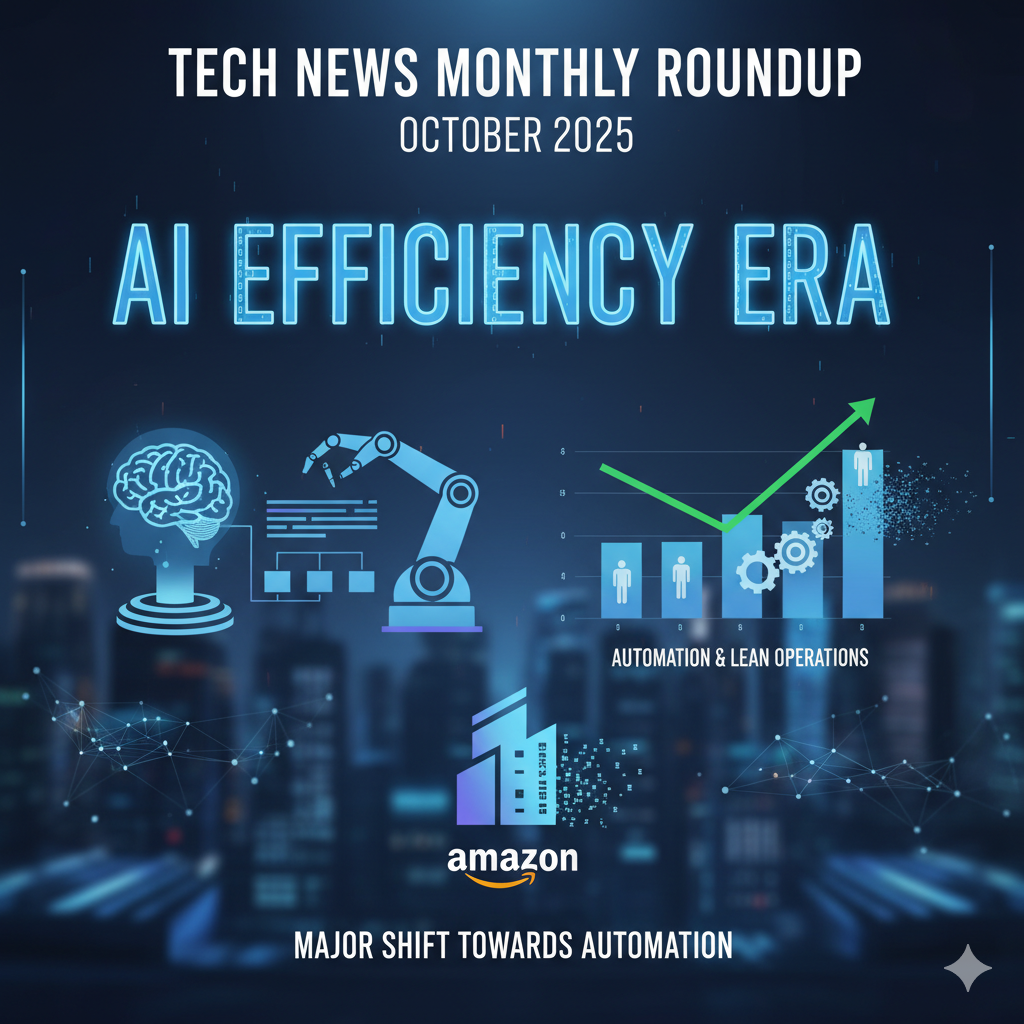
The tech world in October 2025 was defined by a single, powerful trend: the AI Efficiency Era.
This is a period where companies are leveraging Artificial Intelligence not just for new products, but for fundamental organizational restructuring.
The result is a paradox of massive investment in infrastructure alongside significant corporate streamlining.
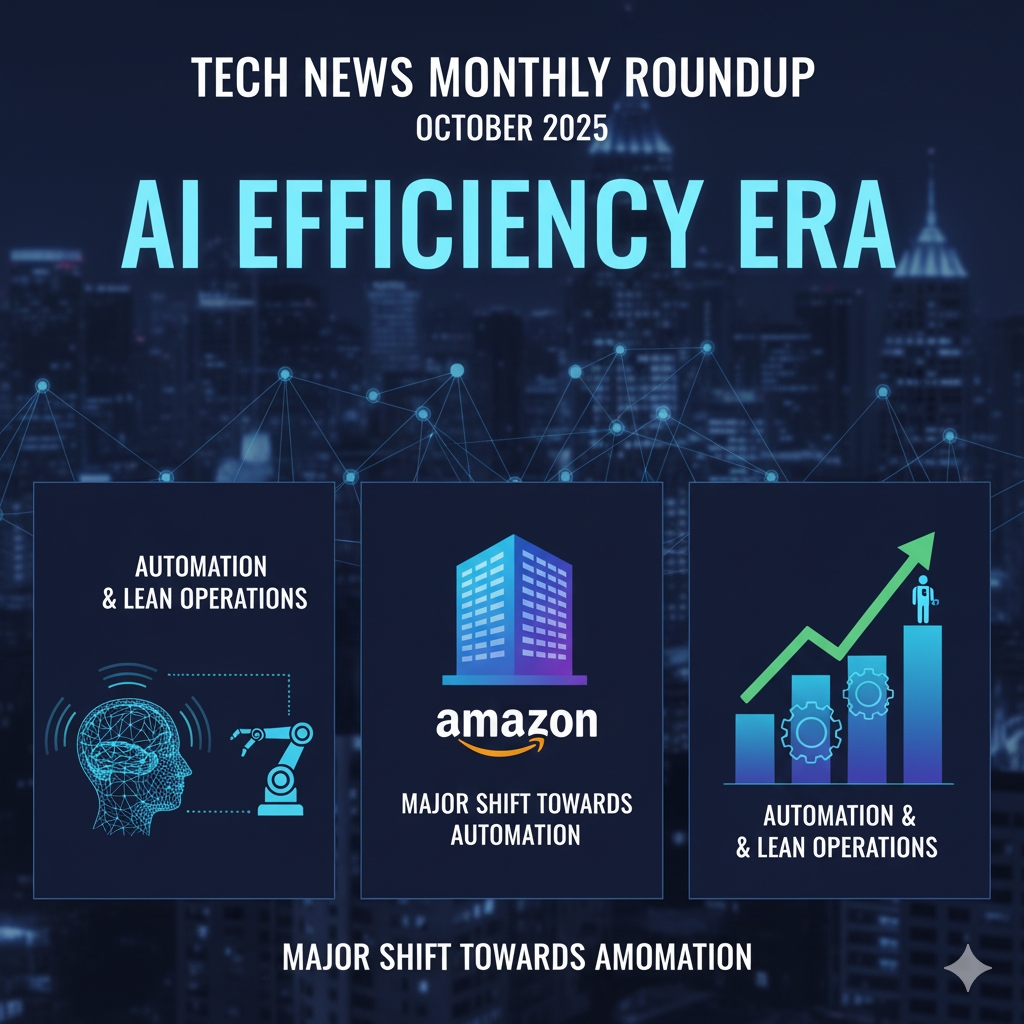
The AI Efficiency Era: Layoffs, Integrations, and Infrastructure Bottlenecks
Amazon’s Leaner, Meaner Machine
The biggest headline shaking the corporate world was the news of Amazon’s planned corporate layoffs.
Reports indicated that up to 30,000 corporate employees across HR, AWS, and device divisions were facing cuts.
While the final number was reportedly smaller, the message from CEO Andy Jassy was clear: a push for simplification and automation.
This is not a sign of financial distress for the e-commerce giant; it is a strategic shift towards a more efficient operating model.
As Amazon integrates robotics and generative AI deeper into its operations, management layers are being trimmed to boost profitability.
This signals a new growth playbook for Big Tech, where leaner operations driven by AI are prioritized over sheer headcount.
The move has analysts predicting a wave of similar “efficiency-driven” restructuring across the entire technology sector.
It’s a stark reminder that even the most successful companies are prioritizing AI-led productivity gains.
Software Innovation: From Chatbot to Checkout
On the software front, the integration of AI into transactional platforms took a major leap forward.
PayPal teamed up with OpenAI to embed instant checkout directly inside ChatGPT.
This groundbreaking move, built on OpenAI’s “Agentic Commerce” protocol, transforms the chatbot from a simple helper into a fully transactional platform.
This is a game-changer for conversational commerce, allowing users to go “from chat to checkout in seconds” based on their conversation with the AI.
For PayPal, this dramatically boosts their network’s relevance in the age of AI-driven decision-making.
For OpenAI, it represents a significant monetization milestone, turning user engagement into direct revenue.
It shows that the next wave of software innovation is less about creating new applications and more about making existing digital workflows seamless and commerce-enabled within AI interfaces.
Expect to see other payment providers and e-commerce platforms rush to replicate this deep integration in the coming months.
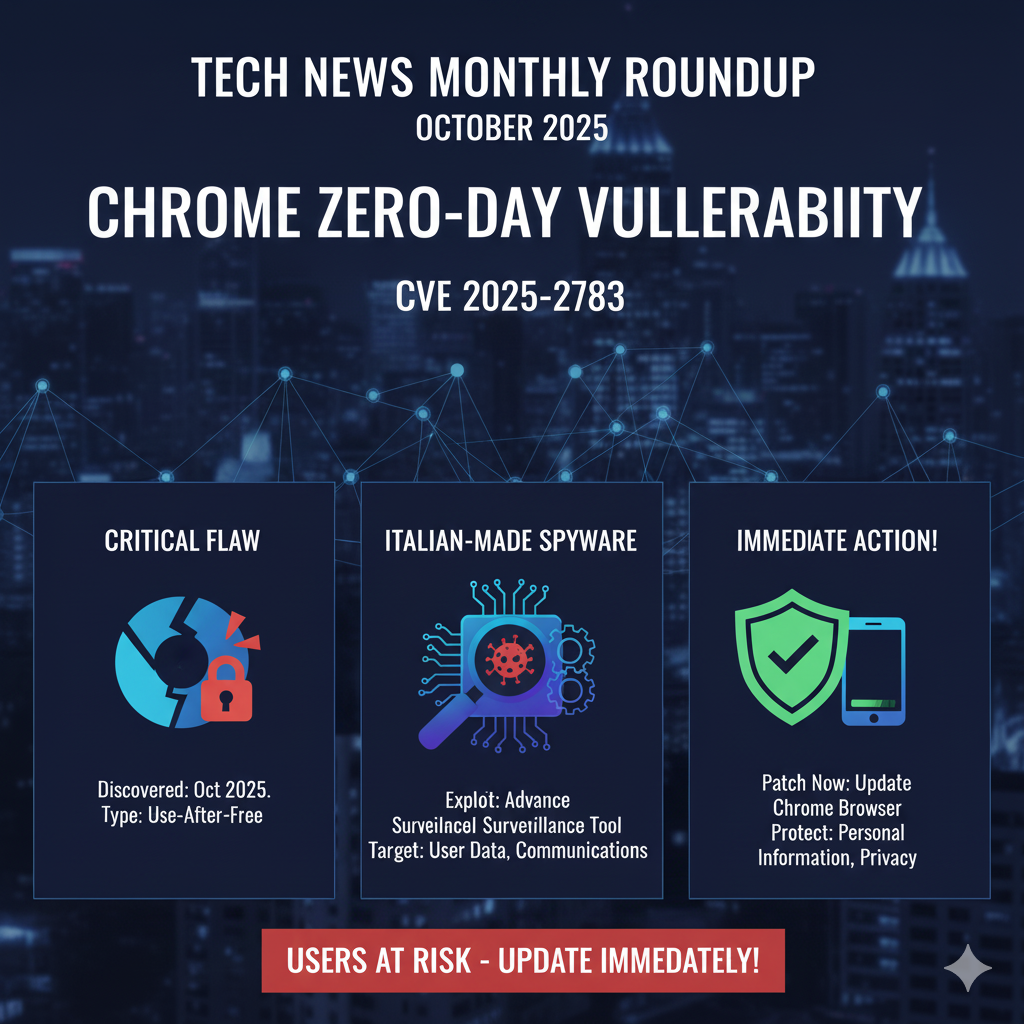
Hardware Headwinds: The Infrastructure Bottleneck
The relentless, explosive demand for AI infrastructure is creating a new set of critical problems for the hardware sector.
SK Group Chairman Chey Tae-won issued a stark warning that the global race to build AI data centers is causing severe supply bottlenecks.
The crucial components affected include high-performance chips, specialized servers, and, most critically, advanced cooling systems necessary to run massive AI clusters.
SK Hynix, a major supplier of the High-Bandwidth Memory (HBM) chips essential for top-tier AI accelerators, is already operating near full capacity.
The warning suggests that the pace of AI adoption may soon be constrained not by a lack of demand or innovation, but by the physical limits of global manufacturing and supply chains.
This is a crucial troubleshooting point for any company planning a major AI rollout: the hardware is rapidly becoming the new bottleneck, demanding longer lead times and higher costs.
The industry must now pivot from a focus on software development to solving these deep-seated supply chain issues.
Networking and Consolidation: The $9 Billion Merger
The networking and chip industry saw significant consolidation in October, driven largely by the need to stay competitive against vertically integrated giants like Apple.
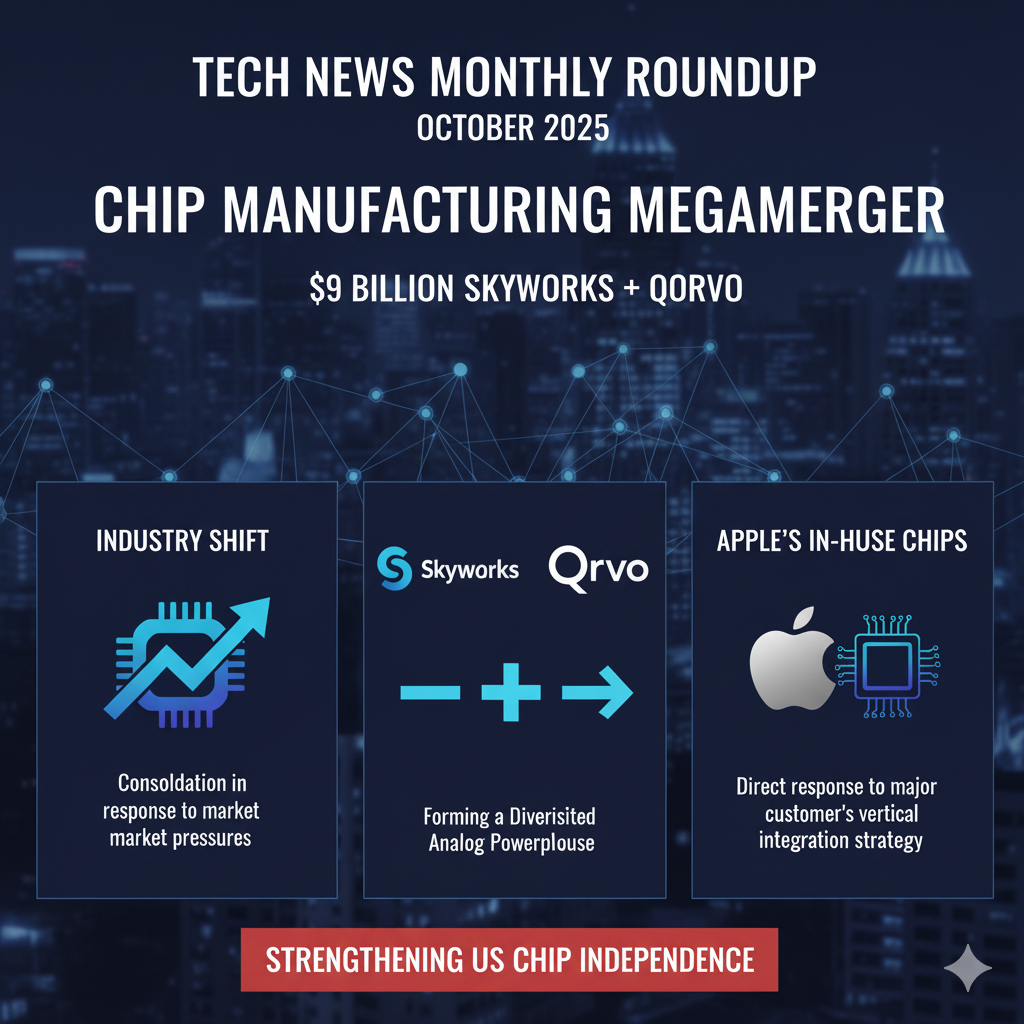
The Skyworks-Qorvo Response to Apple
Skyworks Solutions and Qorvo are in merger talks that could create a combined entity valued at $22 billion.
Both companies are major suppliers of critical Radio Frequency (RF) components used in Apple devices for wireless communication.
They face new pressure as Apple continues its aggressive effort to develop its own in-house chips, threatening their long-term revenue streams.
This potential $9 billion merger aims to combine research efforts, reduce redundancy, and create a stronger, more leveraged entity.
The new company would be better positioned to compete in the rapidly evolving 5G, 6G, and IoT markets, diversifying away from a single major customer.
This kind of consolidation is a key trend in the hardware and networking supply chain as suppliers seek scale to survive against their largest customers who are becoming competitors.
Cybersecurity Crisis: Zero-Days, Spyware, and the October Patch Storm
As always, the most critical and traffic-driving news came from the world of cybersecurity.
October 2025 was a brutal month, characterized by sophisticated zero-day exploits and a massive patching effort that put IT teams on high alert.
The Chrome Zero-Day That Delivered Spyware
The most alarming story was the discovery of a critical zero-day vulnerability in Google Chrome (CVE-2025-2783) that was being actively exploited in the wild.
This was not a general attack; it was a highly targeted campaign leveraging the flaw to deploy sophisticated, Italian-made commercial spyware known as LeetAgent.
LeetAgent is linked to the controversial Memento Labs’ Dante framework, a tool often sold to government agencies for surveillance.
The exploit allowed attackers to gain remote code execution, essentially taking over the victim’s browser and, potentially, their entire system with no user interaction required.
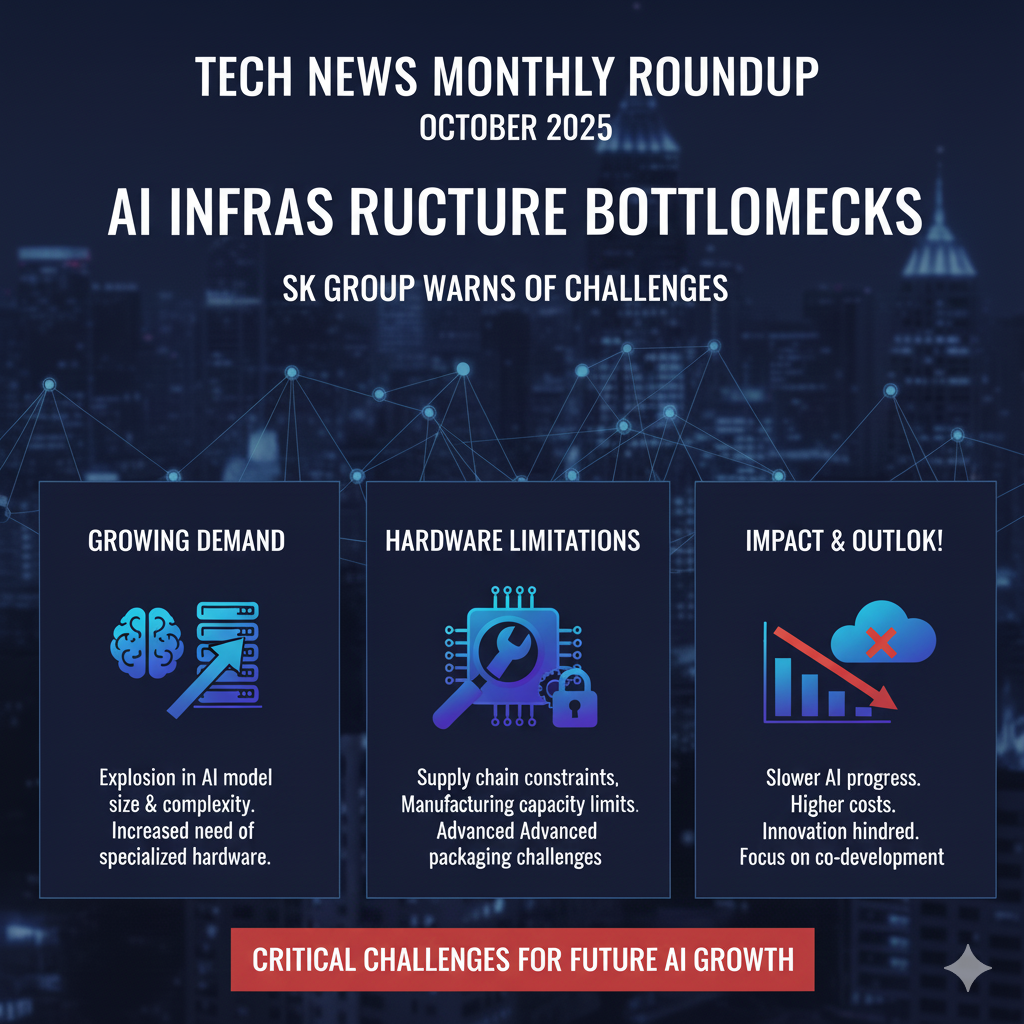
The fact that a major browser was compromised by a zero-day linked to state-of-the-art surveillance tools is a wake-up call for every user and enterprise.
Troubleshooting Tip: Users were urged by Google and security researchers to update Chrome immediately to the patched version.
The incident highlights the necessity of enabling automatic updates for all web browsers, which are often the primary vector for initial compromise and espionage.
Microsoft’s Patch Tuesday: A Record-Breaking Update
Microsoft’s October 2025 Patch Tuesday was one of the largest in recent memory, addressing a staggering number of vulnerabilities—over 170 across its ecosystem.
This massive haul included three separate zero-day flaws that were already being actively exploited in the wild, making the update critical for all Windows users.
The sheer volume of fixes underscores the constant, high-stakes battle between developers and threat actors who are increasingly finding new ways to bypass security measures.
The patches covered everything from Windows Kernel vulnerabilities to flaws in Microsoft Office and Exchange Server, impacting both home users and large corporate networks.
For IT professionals, this was a massive undertaking, highlighting the ongoing challenge of patch management in complex enterprise environments and the need for robust deployment strategies.
Ignoring this Patch Tuesday could leave systems exposed to critical remote code execution flaws.
Enterprise Target: The Oracle E-Business Suite Breach
The enterprise sector was hit hard by the exploitation of a zero-day in Oracle E-Business Suite (CVE-2025-61882).
This vulnerability was exploited by the notorious Cl0p ransomware group weeks before a patch was even officially available from Oracle.
The attack targeted organizations using Oracle EBS for critical business functions like finance, human resources, and supply chain management.
The use of zero-days by major ransomware groups marks a dangerous escalation in cybercrime tactics.
It means that even diligently patched systems can be vulnerable if a flaw is discovered and weaponized before the vendor can respond, a concept known as “zero-day risk.”
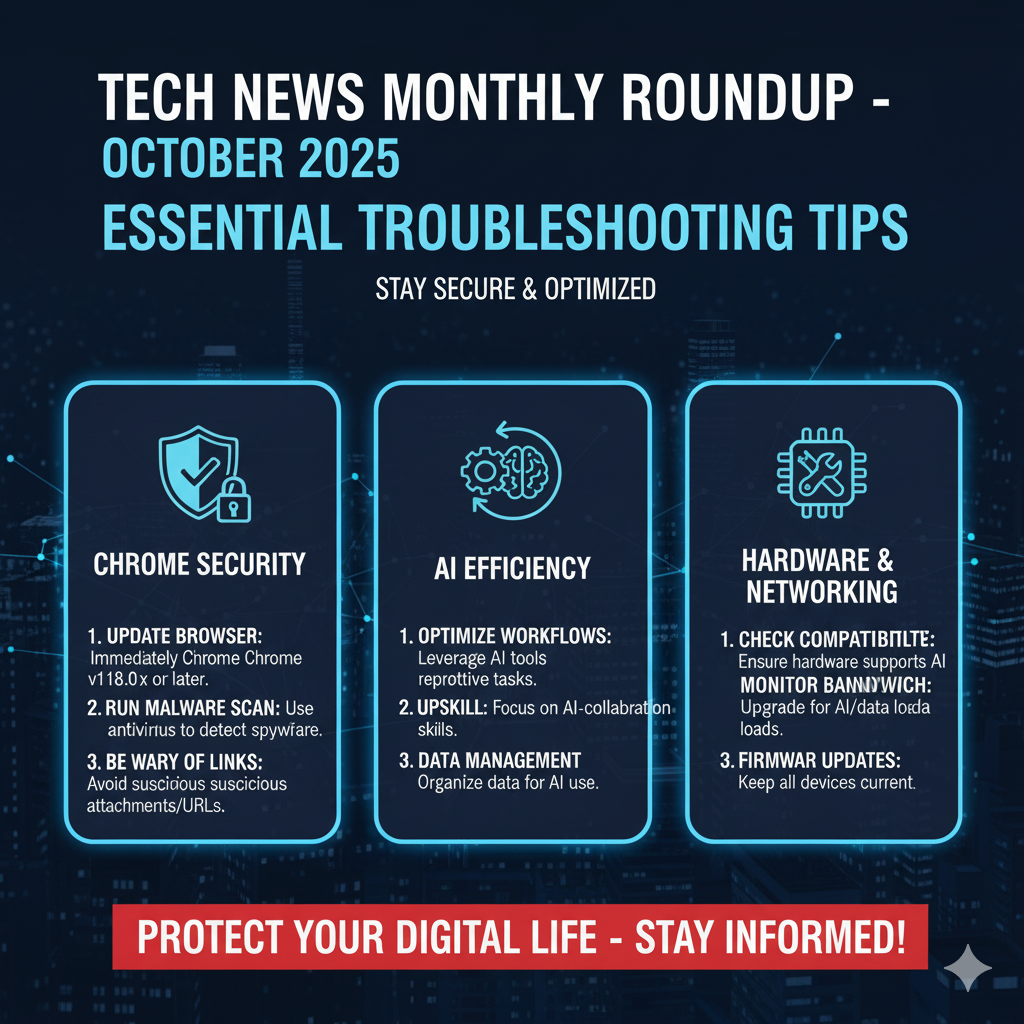
This is a major networking and security issue, as it targets the core systems that run a business’s internal network, potentially leading to catastrophic data loss and operational downtime.
Troubleshooting Tip: Organizations running Oracle EBS were advised to implement network-level monitoring for unusual outbound connections and to strictly segment their EBS installations from the rest of the corporate network.
The Future of AI and the Ethics of Data Scraping
Beyond the immediate news, October also saw significant legal and ethical challenges to the foundation of many AI models: data scraping.
Clearview AI Faces Criminal Complaint
The privacy watchdog NOYB, led by Max Schrems, filed a criminal complaint against facial-recognition firm Clearview AI in Austria.
The complaint alleges that the company intentionally scraped billions of EU citizens’ photos without consent, in breach of GDPR laws.
While Clearview has faced massive fines before, this is the first complaint seeking criminal prosecution, opening the door to potential jail time for executives.
Schrems stated the case aims to stop “mass surveillance disguised as innovation,” setting a global precedent for AI companies that rely on large-scale public data scraping for model training.
The outcome of this case will define the legal boundaries for AI development and data usage for years to come.
The Wikipedia Traffic Dilemma
In a related development, Wikipedia reported a significant drop in traffic, attributing the decline to the rise of AI search summaries and social video platforms.
This highlights a growing concern for content creators: as AI models scrape and summarize information directly in search results, the need for users to click through to the original source diminishes.
This “zero-click” phenomenon threatens the financial sustainability of information platforms that rely on traffic and advertising revenue.
It forces a crucial question for the future of the internet: how will high-quality, human-curated content survive if AI models consume the data without sending traffic back?
The answer likely lies in new monetization and licensing models that recognize the value of the data being used to train these powerful AI systems.
Conclusion: Navigating the New Tech Landscape
October 2025 has provided a clear, if challenging, view of the future: a world dominated by AI, where efficiency is king, hardware is the new constraint, and cybersecurity threats are more sophisticated than ever.
The integration of AI into commerce, the consolidation in the chip industry, and the terrifying zero-day exploits all point to a landscape that is rapidly changing and demanding vigilance.
Staying ahead requires not just adopting new technology, but understanding the underlying trends—from the supply chain bottlenecks to the critical need for immediate, proactive patching.
The key takeaway for every tech enthusiast and professional is this: Update everything immediately, question the supply chain’s resilience, and brace for the AI-driven future.
The next few months will be defined by how the industry responds to the infrastructure, security, and ethical challenges laid bare this October.
